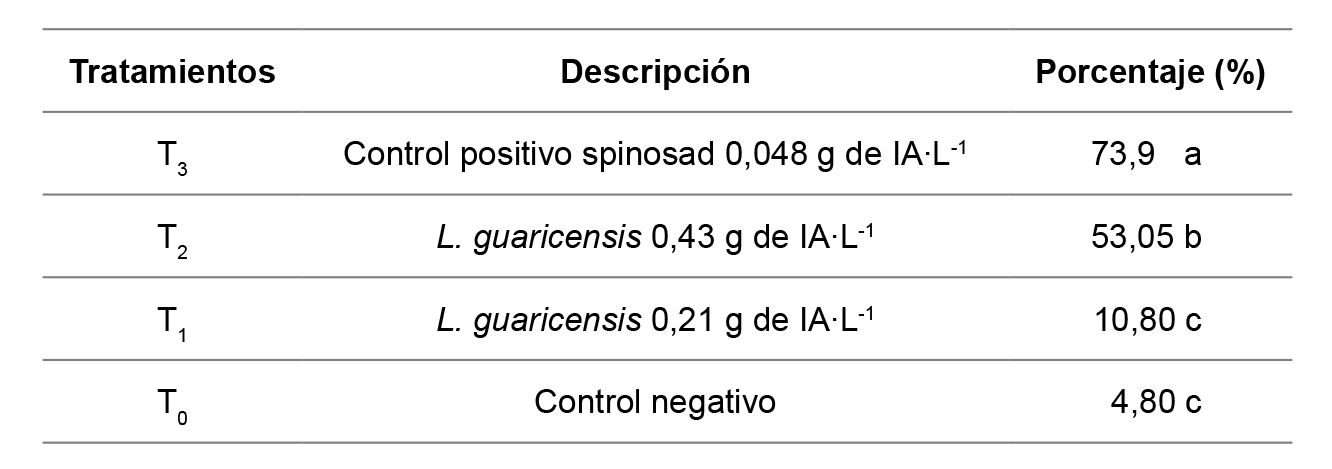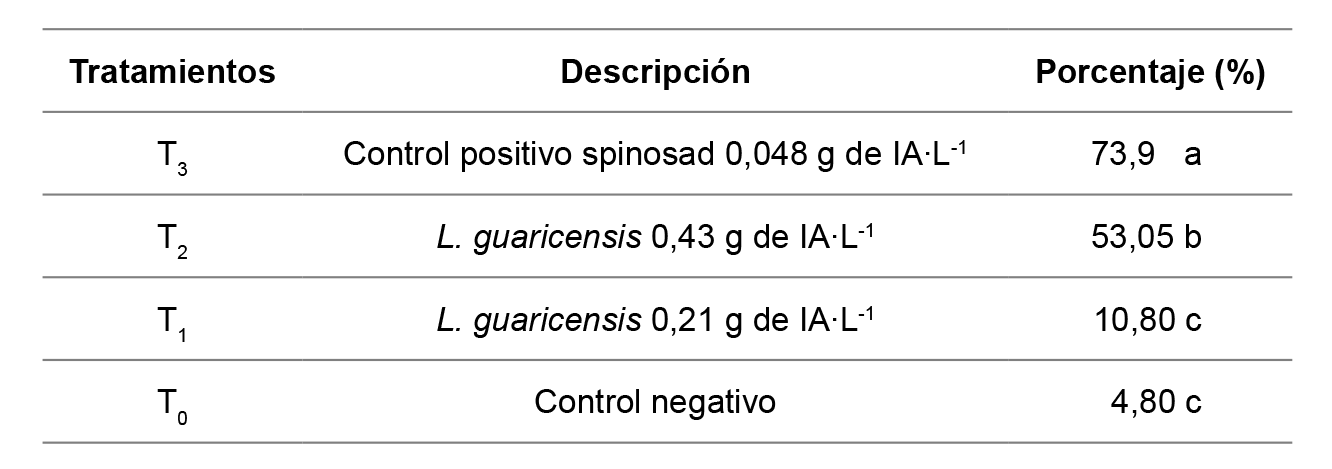Biological activity of Lonchocarpus guaricensis Pittier in the control of larvae of Tuta absoluta (Meyrick)
Keywords:
botanical extract, rotenone, spinosad, Solanum lycopersicumAbstract

Biological activity of Lonchocarpus guaricensis Pittier was evaluated using two doses of Tecnona® in the control of larvae of Tuta absoluta (Meyrick), Azapa Valley, Chile, by a spray on potted tomato plants cv. Naomi, randomly placed in a greenhouse within a nursery. Weeks prior to spraying, the pots were artificially infested with adults of phytophagous to obtain larvae in the leaflets. The evaluated treatments were the following ones: T1 (0.21 g AI of L. guaricensis·L-1), T2 (0.43 g AI of L. guaricensis·L-1), T3 (positive control based on spinosad 0.048 g AI·L-1) and T0 (negative control based on well water). According to the cumulative mortality percentage of larvae counted at 24, 48, 120 hours and 9th day post application, there was no statistical differences between T0 and T1 treatments, in turn, T2 reaches an average of 53.05% mortality not differing from T3 that achieves 73.9%. We conclude that the experimental dose of L. guaricensis 0.43 g AI∙L- 1 can be an attractive alternative for use in Integrated Pest Management of the tomato crop in the Azapa Valley.

Downloads
Published
Issue
Section
License

This work is licensed under a Creative Commons Attribution-NonCommercial-ShareAlike 3.0 Unported License.
Aquellos autores/as que tengan publicaciones con esta revista, aceptan las Políticas Editoriales.


